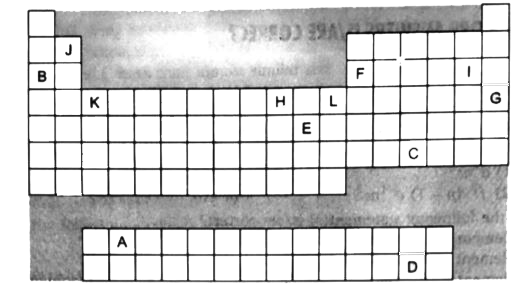The conversion of pig iron to steel frequently requires the addition of:
(I) oxygen or iron oxide (II) transition elements (III)inner transition elements (IV)silica
I, II, III
I, II
II, III
I only
The correct Answer is:B
Step by step video & image solution for The conversion of pig iron to steel frequently requires the addition of: (I) oxygen or iron oxide (II) transition elements (III)inner transition elements (IV)silica by Chemistry experts to help you in doubts & scoring excellent marks in Class 12 exams.
Updated on:21/07/2023Topper's Solved these Questions
- d-BLOCK ELEMENTSBook:VK JAISWAL ENGLISHChapter:d-BLOCK ELEMENTSExercise:ASSERTION-REASON TYPE QUESTIONS
Explore 32 Videos
- d-BLOCK ELEMENTSBook:VK JAISWAL ENGLISHChapter:d-BLOCK ELEMENTSExercise:SUBJECTIVE PROBLEMS
Explore 6 Videos
- CO-ORDINATION COMPOUNDSBook:VK JAISWAL ENGLISHChapter:CO-ORDINATION COMPOUNDSExercise:LEVEL 2
Explore 144 Videos
- ENVIRONMENTAL CHEMISTRYBook:VK JAISWAL ENGLISHChapter:ENVIRONMENTAL CHEMISTRYExercise:ASSERTION-REASON TYPE QUESTIONS
Explore 14 Videos
Similar Questions
Knowledge Check
Assertion : Conversion of potassium ferrocyanide to potassium ferricyanide is an oxidation process.
Reason : Oxidation is the addition of oxygen/electronegative element to a substance or removal of hydrogen/electropositive element from a substance.AIf both assertion and reason are true and reason is the correct explanation of assertion.BIf both assertion and reason are true but reason is not the correct explanation of assertion.CIf assertion is true but reason is false.DIf both assertion and reason are false.
Explain the following observation:
(i) Generally there is an increase in density of elements from titanium (Z=22)to copper (Z=29) in the first series of transition elements.
(ii) Transition elements and their compounds are generally found to be catalysts in chemical reactions.
View SolutionState the position [group] in the periodic table to which the following metals belong (i) Na-alkali metal (ii) Mg-alkaline earth metal (iii) Fe & Zn transtion elements (iv) inner transition elements [metals]. (v) Al
View SolutionThe diagram below shows part of the skeleton of the periodic table ini which elements are indicated by letters which are not their usual symbols.

Answer the following on the basis of modern periodic table:
(I) Alkali metal(s)
(II) an elements with the outer configuration of d8s2
(III) Lanthanoids
(IV) Elements with incomplete f-subshell
(VI) Halogen(s)
(VII) s-block element(s)
(VIII) transition element(s)
(IX) Noble gas (s)
(X) Non-transtion element(s)
View SolutionAssign reason for each of the following statement:
(i) The largest number of oxidation states are exhibited by the elements in their row transition elements.
(ii) The atomic radii decrease in Size with the increasing atomic number in the lanthanoid series
View SolutionExplain the following observation :
(i) Transition elements generally form coloured compounds.
(ii) Zinc is not regaded as a transition element.
View SolutionDescribe the trend in I.E., electrode potential, atomic radii and oxidation states of elements of first transition series.
View Solution(a) Describe the general trends in the following properties of the first series of the transition elements:
(i) Stability of +2 oxidation state (ii) Formation of oxometal ions
(b) Assign reason for each of the following:
(i) Transition elements exhibit variable oxidation states.
(ii)Transition metal ions are usually coloured
View Solution